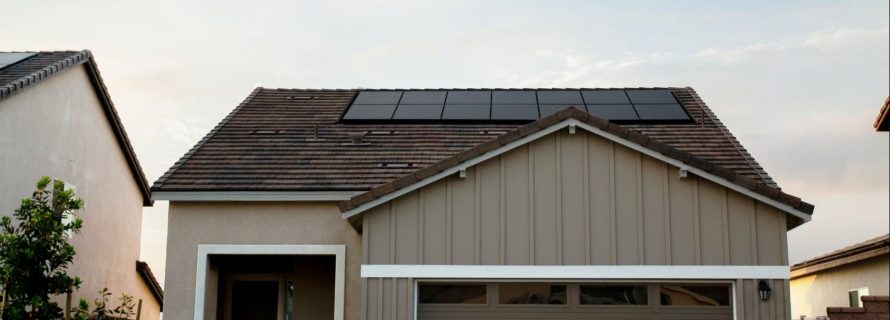5 Questions to Ask Yourself Before Placing Solar Panels on Your Roof

It isn’t hard to see that the solar industry continues to gain popularity. Each year, more business owners and homeowners realize that going solar saves money and benefits the environment. The Center for Climate and Energy Solutions found that solar energy is so popular that it will account for 48% of all renewable energy by 2050.
If the previous data interests you, here is a comprehensive list of solar industry statistics from Electricalschool.
Before you can get solar panels installed on your roof, you’ll need to ask yourself a few questions. With that in mind, here are five questions to ask yourself before you get solar panels on your roof.
1. How Old is Your Roof?
The first question might also be the easiest to answer: how old is your roof? Don’t worry if you’re unsure of your roof’s age. This part of the home is often one that’s easy to forget about. If you’ve lived in your home for a while, but don’t know the age of your roof, it might be a good idea to schedule a roof inspection.
You don’t want to have solar panels on top of a damaged or otherwise weak roof. If this happens, it could lead to your solar panels falling through this part of your home.
On average, residential solar panels will generate power for 20 to 30 years. Scheduling a roof inspection ensures that your solar panels don’t outlast the roof they rest on.
2. How Much Shade Does Your Roof Receive?
It’s also important to know how much shade your roof receives. Most likely, there is one or several parts of your roof hidden away from the sun. Placing solar panels in these areas makes it difficult for them to absorb the sun’s rays. It would also mean that you’re not getting the most ROI from your solar panels.
Figuring out how much shade your roof receives might sound difficult, but it isn’t. Google recently launched its own solar savings estimator called Project Sunroof. All you need to do is enter your home address and hit the ‘Check My Roof’ button.
In moments, you’ll have a heads-up display of your roof. You’ll also see orange shading over the parts of your roof that receive the most sunlight. If using Project Sunroof isn’t an option, it might be best to schedule an appointment with a solar technician.
3. What’s the Orientation and Pitch of Your Roof?
You’ll also want to check out the orientation and pitch of your roof. It’s okay if these terms sound unfamiliar. The orientation of your roof means what direction it faces. And, the pitch of your roof means its angle or slope.
So, what’s the best orientation and pitch for solar panels? The Office of Energy Efficiency and Renewable Energy reports that solar panels perform best on south-facing roofs featuring a slope between 15 to 40 degrees. That’s not to say that roofs with solar panels facing east, west, or north won’t provide lots of energy.
Determining the pitch of your roof is also important. If your roof is too steep, it will be too unsafe for someone to install your solar panels.
4. How Big is Your Roof?
Another important thing to think about is the size of your roof. It would make sense that placing solar panels all over your roof is a great idea. However, as mentioned earlier, not all parts of your roof receive equal amounts of sunlight.
Depending on your location, you likely also have fire safety codes to follow. These laws specify where you can have solar panels. A clear path is critical for firefighters that need to get into your home during an emergency.
Fortunately, with advancements in solar technology, even buildings with smaller roofs can have panels providing plenty of energy.
5. What’s Your Roof Made Of?
Lastly, it’s time to focus on roofing materials. Understandably, there’s not much you can do to change the material that makes up your roof, unless you are looking to replace your entire roof. But knowing what roofing materials pair well with solar panels is imperative if a new roof is in your future.
Generally speaking, there isn’t a type of roof that’s impossible to install solar panels on. But some roofing materials are far easier to place solar panels on than others. Asphalt shingles, tile, and metal are all great roofing materials for solar panels.
It’s possible to install solar panels on wood roofs. With that said, this material typically doesn’t hold up well under foot traffic. Considering that, it might be hard for a roofing company to place solar panels on these roofs without damaging them. So, you probably won’t see many companies offer solar panel installations on wood roofs.
Before you choose roofing materials, make sure to ask yourself these previously mentioned questions. Answering these questions will ensure you can start enjoying everything solar energy has to offer.
About The Author: Written By Amanda Noel.
Photo by Vivint Solar on Unsplash
- Additions and New Construction
- All Exteriors
- Alterations
- Basements
- Bathrooms
- Customer Service
- Customer Stories
- Decks
- Design & Planning Show
- DIY
- Doors
- Educational Resources
- Extreme Makeover Home Edition
- Fashion Show
- General Remodeling
- Green Living
- Handyman Home Services
- Home Decor
- Home Entertainment
- Home Improvement
- Home Improvements
- How to Tips
- In The Community
- Kitchens
- Off-the-Wall Remodeling Stories
- Remodeling
- Resources
- Roofing
- Siding
- Social Media
- Sunrooms
- Tips & Tricks
- Trends
- Windows

